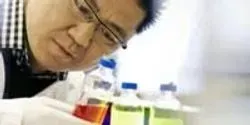Clinical Research Labs

Designing nanomedicine to combat diseases is a hot area of scientific research, primarily for treating cancer, but very little is known in the context of atherosclerotic disease. Scientists have engineered a microchip coated with blood vessel cells to learn more about the conditions under which nanoparticles accumulate in the plaque-filled arteries of patients with atherosclerosis, the underlying cause of myocardial infarction and stroke.

Dartmouth researchers have developed a protocol that permits cells harvested from melanoma tumors in mice to grow readily in cell culture. Their findings were published in an article, Multiple murine BRafV600E melanoma cell lines with sensitivity to PLX4032, in the January 25, 2014 issue of Pigment Cell & Melanoma Research.

University of Adelaide physics researchers have developed a new type of laser that will enable exciting new advances in areas as diverse as breath analysis for disease diagnosis and remote sensing of critical greenhouse gases.

A team of researchers at the University of Toronto has discovered a method of assembling “building blocks” of gold nanoparticles as the vehicle to deliver cancer medications or cancer-identifying markers directly into cancerous tumors.

Stephen Barnes, Ph.D., Professor of Pharmacology & Toxicology and Director of the Targeted Metabolomics and Proteomics Laboratory at the University of Alabama at Birmingham (UAB), talks about the changes taking place in the field of mass spectrometry (MS) as it migrates from the research lab to a clinical environment.









